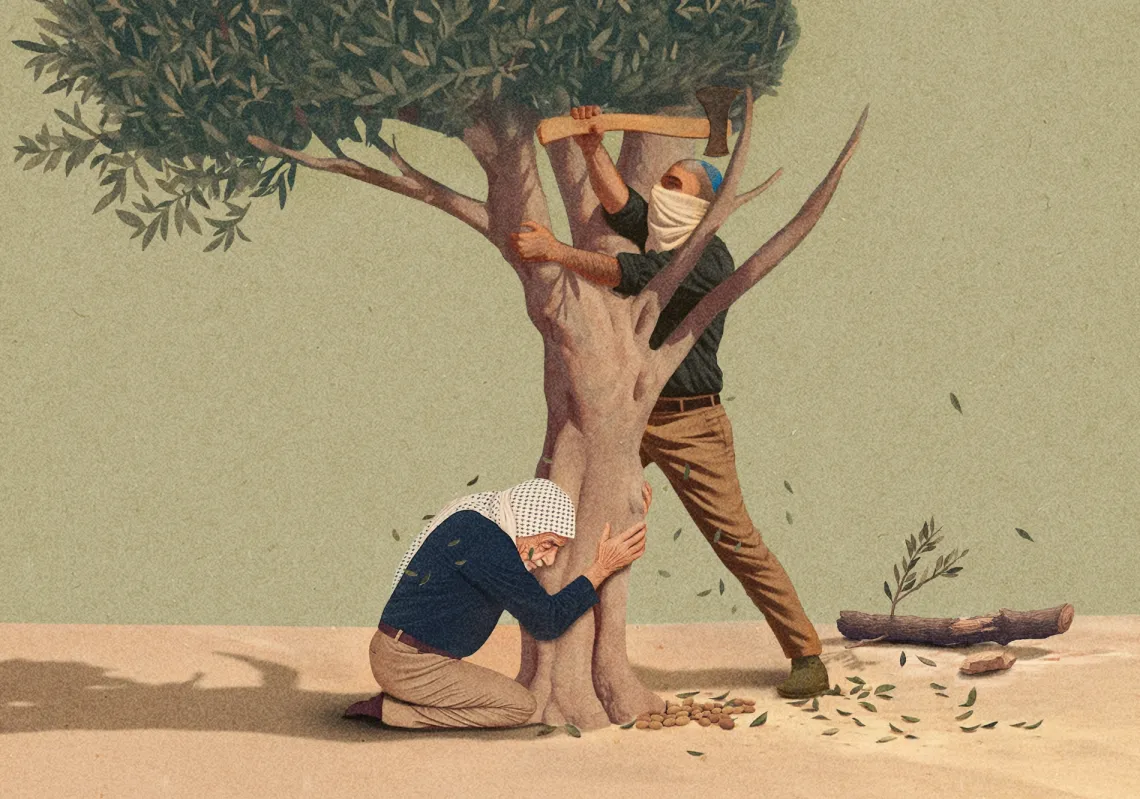 Scanograms #1, Image 09, Samira in her wedding gown, the first Christian wedding in Lod after 1948. (DOR GUEZ/THE MOSAIC ROOMS)[/caption]It is no secret that Israeli society consists of a number of diverse ethnic communities. Culturally, artist Dor Guez—who was born in Jerusalem to Palestinian Christian and Tunisian Jewish parents—is a strange mix, although it is easy to forget that he also embodies the various human migrations that led to the creation of the state of Israel as it is today.
Scanograms #1, Image 09, Samira in her wedding gown, the first Christian wedding in Lod after 1948. (DOR GUEZ/THE MOSAIC ROOMS)[/caption]It is no secret that Israeli society consists of a number of diverse ethnic communities. Culturally, artist Dor Guez—who was born in Jerusalem to Palestinian Christian and Tunisian Jewish parents—is a strange mix, although it is easy to forget that he also embodies the various human migrations that led to the creation of the state of Israel as it is today.
Guez’s Palestinian Christian grandmother and her family were forced out of their hometown of Jaffa during the 1948 war. They relocated to Al-Lydd, which was renamed Lod by Israeli conquerors, where Guez’s mother was born and where they lived as one of the few remaining Palestinian families. Guez’s father’s Tunisian Jewish family moved to Lod in the 1950s, one of many Jewish immigrant families to settle in the newly formed Israel.
[caption id="attachment_55241575" align="alignright" width="300"]
 Dor Guez
Dor Guez40 Days Scanogram, 2012
Courtesy of the Mosaic Rooms[/caption]
Christian Palestinians constitute 2.3% of the Israeli population; most Palestinian Christians today live abroad, and perceive themselves culturally and linguistically as Arab Christian. Discussing his unusual heritage with The Majalla and his own sense of identity—whether he identifies himself more with Christianity or Judaism, and as an Arab, a Palestinian, a Tunisian or an Israeli—Guez emphatically states that he is “one hundred percent of all of these labels.”
Guez's latest exhibition, 40 DAYS, is currently showing at the Mosaic Rooms in London. It focuses on the Christian Palestinian and minority experience, offering a nuanced understanding of Palestinian and Israeli society. Through a mix of photography, documents and video installations—some of which depict the artist’s maternal relatives, who speak Hebrew—40 DAYS helps to dispel generalizations by inviting the viewer to question their ideas of ethnicity and nationalism. The exhibition also challenges assumptions about the state of Israel, and about Palestinian ethnicity being equated only with the Muslim faith. However, Guez edges away from the exclusively religious aspect of the Christian Palestinian identity; as he says, “It's a culture, not just a faith.” Instead, the exhibition presents a picture of a very humble existence through scenes of familiar and mundane activities.
Minorities are often hit the hardest in times of unrest, and these communities in the Middle East have suffered under the effects of globalization, nationalism and cultural changes. While this suffering has been due mostly to the erosion of their cultural groups, it also arises from insufficient awareness of their situation. “Generally, the position of a minority—everywhere in the world—is not only a question of been outnumbered, it also relates to media coverage, history and writing,” Guez says, although he does point out that “the topic of minorities in the Middle East, like the Christian Palestinians, is actually been heard more and more in the last few years, especially after the Arab Spring.”
[inset_left]Memory, Guez says, is what motivates him artistically. Perhaps preserving their memories is one way as an artist to preserve the existence of these communities. [/inset_left]
Memory, Guez says, is what motivates him artistically. Perhaps preserving their memories is one way as an artist to preserve the existence of these communities. Photographs of desecrated grave sites bearing the sign of the cross in Lod cemetery form a main component of 40 DAYS. The force that was used to carry out the vandalism is evident by the fact that the sturdy stone grave coverings have been broken into pieces, revealing the bones of the deceased. Guez’s late grandfather, Yaqoub Monayer, captured the images to take to the police as evidence. When they failed to find the perpetrators, the photos were returned to him and were subsequently put away in a kitchen drawer. There, they were left for years to deteriorate, and became stuck together in the humidity. The photos of the grave sites have been scanned and enlarged and show the tearing around the edges, which presents them as objects with their own story, their own memory.
40 DAYS is a means of preserving the intricacies of the everyday condition of a minority community; it also serves to resurrect buried and suppressed individual memories. In one of the scenes in the video installations, we see a close-up of Guez’s grandmother’s hands as she thumbs through the images, pulling the stuck ones apart, causing the tearing. In discussing the event, she recalls that one of the graves belongs to her mother. Guez has said that the photos “tell the story of what they refuse to talk about directly.” A second photo in the exhibition, of the wedding of his grandparents, was discovered by the artist in a plastic bag under the bed. The wedding took place in Al-Lydd just one year after the 1948 war.
[caption id="attachment_55241579" align="alignright" width="300"]
 Watermelons under the bed. DOR GUEZ/ MOSAIC ROOMS[/caption]
Watermelons under the bed. DOR GUEZ/ MOSAIC ROOMS[/caption]
Dor’s use of his family in this exhibition presents a highly intimate portrait of the community, which is humbling as well as touching and deeply personal. But the character who we become most intimate with is the main subject, Guez's grandfather, whose final moments and burial site feature in the exhibition in a video also called 40 Days, the name given to ceremony held in the Orthodox church after this period of mourning.
Guez says of his grandfather, “He had an enormous influence on my education, and on the way I relate to my cultural and political environment—he had a strong influence on my visual expression." In the film, Watermelons under the Bed, we see Guez's grandfather, lying in his bed with his back to camera, discussing the changing times. Every now and then, he turns around eagerly, to test the quality of watermelons that are handed to him. In another shot, he is seen peeling prickly pears in the kitchen. Both fruits have symbolic meaning for Palestinians and Israelis.
In the same video, an adult subject who is being interviewed is discouraged from talking about politics by his mother, who is off camera. As a member of a small community, she is clearly cautious about discussing such matters. "What am I, a child?" he asks.
Perhaps this is the generational gap that Guez mentions. “A lot of political Palestinian movements across the Middle East were actually founded by Christians. Personally, I think that the first and maybe the second generation after 1948 are more cautious [about discussing politics]—definitely not the third.”
As a member of this more outspoken third generation, Guez's desire to record and preserve the history of his family and his people is admirable, and extends beyond this exhibition. He is currently assembling an online database that includes thousands of images from the Christian Palestinian diaspora. It is, as Guez states, a community project, as individuals contribute their own family photos to the archive. "In my eyes, the subject matter is not a story of one community, but the story of us all as individuals facing cultural changes. It is a personal reflection about questions of identity, culture and memory."
40 DAYS runs at the Mosaic Rooms in London until June 6, 2013.









